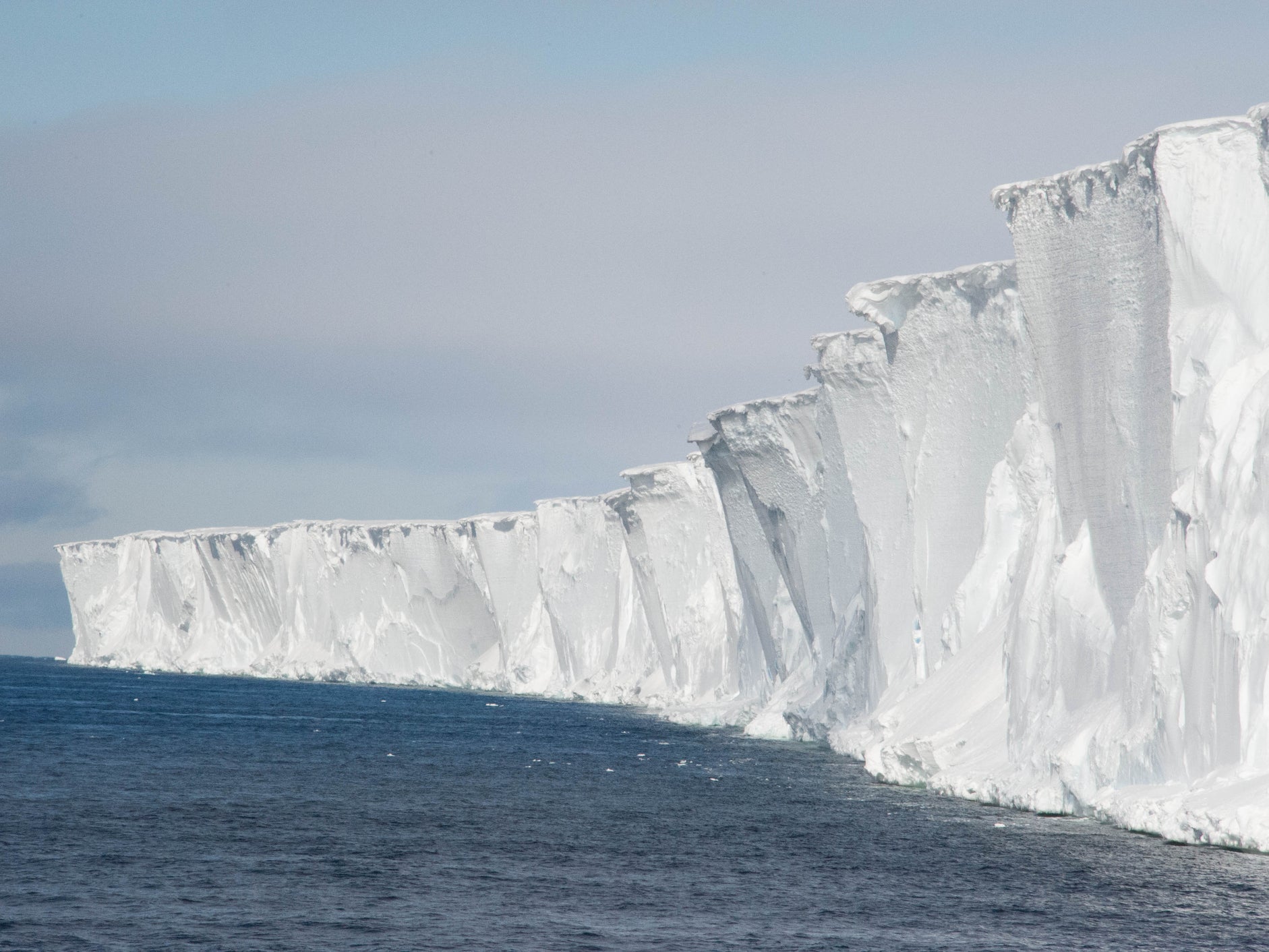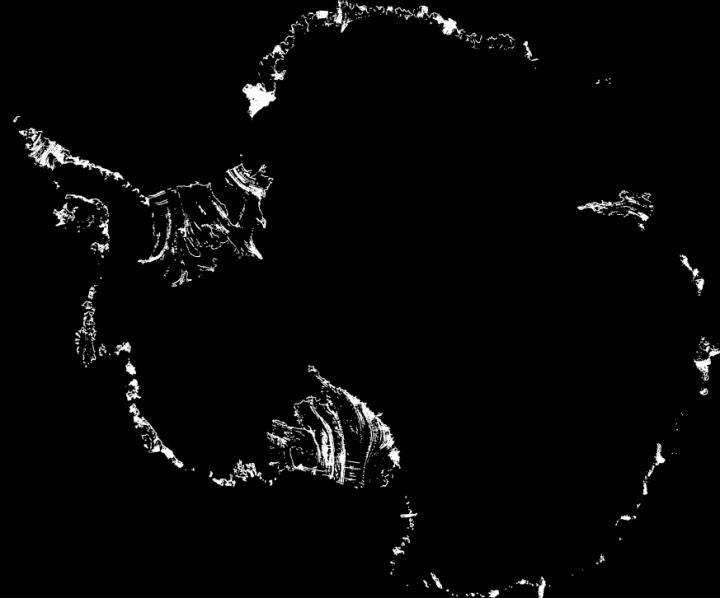Climate crisis: Global warming could rapidly destroy Antarctic ice shelves with ‘major consequences’, study suggests
Loss of critical barriers to glaciers means sea levels could rise quickly, scientists warn

Your support helps us to tell the story
From reproductive rights to climate change to Big Tech, The Independent is on the ground when the story is developing. Whether it's investigating the financials of Elon Musk's pro-Trump PAC or producing our latest documentary, 'The A Word', which shines a light on the American women fighting for reproductive rights, we know how important it is to parse out the facts from the messaging.
At such a critical moment in US history, we need reporters on the ground. Your donation allows us to keep sending journalists to speak to both sides of the story.
The Independent is trusted by Americans across the entire political spectrum. And unlike many other quality news outlets, we choose not to lock Americans out of our reporting and analysis with paywalls. We believe quality journalism should be available to everyone, paid for by those who can afford it.
Your support makes all the difference.Most of Antarctica’s vital ice shelves that encircle the continent remain frozen all year round and are stable, but fractures in their surfaces could make them vulnerable to rapid collapse if rising temperatures drive meltwater into the gaps, according to a new study.
The ice shelves, which float on the ocean at the edge of the continent, are a crucial barrier to glaciers moving from the land to the sea, and their sudden failure could therefore have “huge implications for sea level”, an international research team said in the paper, which was published in the journal Nature.
Many ice shelves form in the protected waters of the continent’s numerous expansive bays and gulfs. Here, the land on either side compresses the ice; this pressure helps maintain the ice shelves and braces them against the slow march of the glaciers where they meet the frozen seas.
But large fractures regularly appear as the ice nears the open ocean. The land on either side drops away and the ice shelves are free to stretch out.
Satellite observations show that as a result of this freedom, the shelves rip apart. Most of them are raked with numerous long fractures perpendicular to the direction of stretching.
Fractures that form at the surface can be tens of metres deep. Others, forming from the bottom, can penetrate hundreds of meters upwards in the ice. Some of these fractures are hundreds of metres wide.
It is these large cracks, combined with warming temperatures that have raised concerns about the continued stability of the ice shelves.
Climate models indicate that the planet is already on course for widespread warming this century, while existing research has shown that even subtle temperature swings can spur widespread melting.
The latest study suggests this could send meltwater surging into the surface fractures. Such surges would potentially cause hydrofracturing – a process in which liquid water, which is heavier than ice, violently forces the fractures to “zip open”, and causes the shelf to rapidly disintegrate.
The scientists estimate that between 50 and 70 per cent of the areas of the ice shelves buttressing the glaciers are vulnerable to such processes.
“It’s not just about melting, but where it’s melting,” said the study’s lead author, Ching-Yao Lai, a postdoctoral researcher at Columbia University’s Lamont-Doherty Earth Observatory.
Co-author Jonathan Kingslake, a glaciologist at Lamont-Doherty, said: “The ice shelves – that’s the weak spot, where the atmosphere, the ice and ocean interact.
“If they fill up with meltwater, things can happen very quickly after that, and there could be major consequences for sea levels.”
Hydrofracturing of this kind has already been observed in Antarctica.

Parts of the Larsen Ice Shelf, which had been stable for at least 10,000 years, disintegrated within just days in 1995 and 2002.
This was followed by the partial breakup of the Wilkins Ice Shelf in 2008 and 2009. Hydrofracturing is believed to have been a key driver of the failure of these ice shelves.
The Larsen and Wilkins shelves comprise some of the northernmost ice on the continent, and so have been the first to suffer under rising temperatures and seasonal melting.
The research team highlighted a previous study in 2017 by Dr Kingslake which revealed that seasonal ponds and streams on the ice surface are far more common across Antarctica than previously believed, with some reaching to within 375 miles of the South Pole.
But for now, most of the large fractures recorded in the ice shelves are not subject to hydrofracturing.
The new study shows that meltwater ponding is currently affecting only about 0.6 per cent of east Antarctic ice shelves that provide buttressing.
However, a much larger percentage would potentially be endangered if warming takes hold, the scientists warned.
In collaboration with Cameron Chen, a researcher from Google, Dr Lai trained a machine-learning model to identify ice-shelf fracture locations across Antarctica, in order to produce the first continent-wide map of such features.
Although most fractures do not contain liquid water at present, the scientists considered future cases in which meltwater might fully fill the surface fractures. This allowed them to predict which parts of the shelves would be vulnerable to hydrofracturing.
They calculated that inflow of liquid into the existing fractures could potentially exert enough force to cause widespread hydrofracturing across 50 to 70 per cent of the ice-shelf areas that provide buttressing.
They said the main exceptions were smaller, more solid areas of ice closest to land, which experience less stress from stretching.
Despite the concerns that their research raises, the scientists said they cannot predict the ice shelves’ behaviour with any exactitude.
“How fast meltwater would form and fill in those cracks is the first question,” said Dr Kingslake.
He said the worst-case scenario would be that “lots of places will be covered by lots and lots of water by the end of the century”.
But projections vary widely, depending on which models scientists use, and how vigorously humanity cuts greenhouse gases, or doesn’t.
The second question is whether particular locations will undergo hydrofracturing, he said. The third question: whether the process would run away, causing the shelves to undergo explosive Larsen-type disintegration.
Theodore Scambos, a leading Antarctic glaciologist at the US National Snow and Ice Data Centre, said the research “does a great job of pointing to areas where one can say, ‘If it floods with melt here, it’s likely to break up the shelf.’”
He added that it “has huge implications for sea level” if summer temperatures along the coasts rise.
“Eventually, all the ice shelves could be covered by melt water,” said Dr Lai.
“But we don’t have a time frame, and there are a lot of big questions left.”
Join our commenting forum
Join thought-provoking conversations, follow other Independent readers and see their replies
Comments